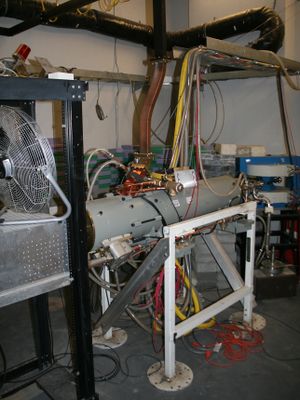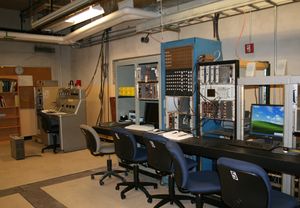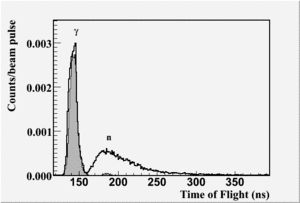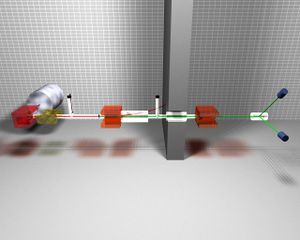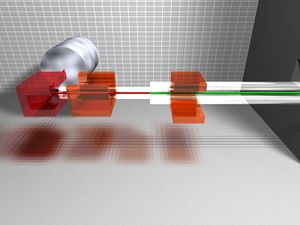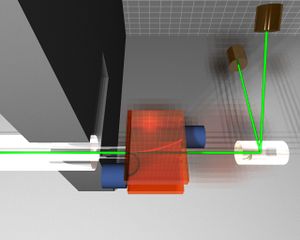Difference between revisions of "NEUPRFP 2009"
| Line 87: | Line 87: | ||
large, even for such a low polarization. | large, even for such a low polarization. | ||
\\ | \\ | ||
| + | |||
| + | I CAN GENERATE THIS PLOT IF WE WANT IT. | ||
begin{figure}[ht] | begin{figure}[ht] | ||
Revision as of 22:32, 26 February 2009
A PDF version of the RFP is given below
- Proposal Due date
- March 16,2009
Guidelines
Go/NoGo requirements
- Commitment to reporting
- If DOE Lab Work and safety Health program
- Export Control
- Standard Research Subcontract
- Quality Assurance if non-academic partner
- commitment to prepare additional contracts
Proposal Outline
Title: \begin{center} {\bf \Large Photofission of Actinides with Linearly Polarized Photons}\\ Technical Workscope : AFS-2 \end{center}
Technical Work Scope and Mission Relevance (20% or 3 pages)
(D.Dale)
This project involves the investigation of nuclear photofission at a fundamental level. Its primary goals are to (1) ascertain if the angular distribution of fission fragments from active interrogation of linearly polarized photons will result in a signature in the form of easily detected neutron asymmetries, and if so, (2) determine if this phenomenon can be used in the areas of materials control and accountability and as a technique to quantify actinides for safeguards and quality control applications. The technique for the production of linearly polarized photons from a bremsstrahlung beam described in this proposal is well established and can be readily implemented as an add on to other techniques using bremsstrahlung beams for active interrogation. The fundamental measurements of the dependencies of the fission fragment angular distributions and their expected manifestation in the neutron angular distributions, however, have yet to be performed.
Proposed scope description and Scientific Merit (20% or 3 pages)
(D.Dale)
For linearly polarized photons and considering only E1 transitions, the photofission of an even-even nucleus ($J^{\pi} = 0^+$, such as $^{238}U$) gives the angular distribution of the fission fragments \cite{Geissen1982}:
\begin{equation}
\end{equation}
The angular distribution coefficients $A_o$ and $A_2$ depend on the
transition
state (J,K), where $K$ is the projection of the total spin $J$ on the
symmetry axis of the deformed nucleus. For $J = 1, K = 0$, we have
$A_o = 1/2, A_2 = -1/2$ and for $J = 1, K = 1$, we have $A_o = 1/2, A_2 =
1/4$.
$P_2 = \frac{1}{2}(2 - 3 sin2 \theta)$, $P_{\gamma}$ is the
photon polarization, and $f_2(1,1) = 3 sin2 \theta$. $\theta$ is the
polar
angle with respect to the beam and $\phi$ is the azimuthal angle ($\phi =
0$
parallel to the electric field vector and $\phi = \pi/2$ perpendicular to
E). \\
These angular distributions of the fission fragments are shown in figure \ref{fig:asym} for fragments emitted parallel and perpendicular to the polarization vector for a photon polarization of 30\% and for both K = 0 and K = 1. It can be seen that the asymmetries are large, even for such a low polarization. \\
I CAN GENERATE THIS PLOT IF WE WANT IT.
begin{figure}[ht] \centering \psfig{figure=asym.eps,height=5.5in,width=5.0in} \caption{$\theta$ distribution of fission fragments for $K = 0,1$ and $\phi = 0, 90^{\circ}$. Figure is taken from reference \cite{Geissen1982}.} \label{fig:asym} \end{figure}
For any target thicker than a few $mg/cm2$, of course, the fission fragments are not detectable. The question we wish to address here concerns whether or not the angular asymmetry in the fission fragments is manifest in the angular distribution of the prompt neutrons which they emit, thus providing a possible signature for the presence of photofission. \\
To a very good approximation, the recoiling fission fragments emit neutrons isotropically in their center of mass\cite{Ploeg95}. A fully accelerated fission fragment travels with a speed of about 4\% of the speed of light. In the center of mass of the fragment, a typical 1 MeV neutron travels with a $\beta$ of about $4.6$\% of $c$. Thus, the neutron energy spectrum measured in the laboratory is a convolution of the "primordial" spectrum which the excited fission fragment emits, and the kinematical effects due to the fragment recoil. \\
These effects were examined under the following assumptions:
\begin{itemize}
\item{}The fission fragment mass distribution was sampled uniformly between $85<A<105$ and $130<A<150$.
\item{}A fixed amount of total kinetic energy, 175 MeV, is given to the two fission fragments.
\item{}Neutrons are emitted isotropically in the center of mass of the fully accelerated fission fragments with an energy distribution given by:
\begin{equation} N(E) = \sqrt{E} exp(-E/0.75) \end{equation}
This reproduces the fission laboratory neutron energy distribution as measured with $(n,f)$.
\item{}The fission fragment angular distribution is sampled in both
$\theta$ and $\phi$ as noted above
for either K = 0 or K = 1, and the neutrons were given the appropriate
kinematic boost.
\item{}The resulting rate asymmetry $\frac{N(\theta = \pi/2 ,\phi = 0)}{N(\theta = \pi/2,\phi = \pi/2)}$ is calculated for $P_{\gamma} = 0.3$. This degree of polarization is commensurate with that attainable by using off axis bremsstrahlung, as described below.
For a pure $K = 0$ transition, the resulting $\phi$ distribution is shown in the figure~\ref{fig:k0k1}. The resulting rate asymmetry, $\frac{N(\theta = \pi/2,\phi = 0)}{N(\theta = \pi/2,\phi = \pi/2)}$ is 1.25, reflecting the angular distribution of the fission fragments as well as the "washing out" effect of the neutrons emitted isotropically in the frame of the fission fragment. This asymmetry is for the case in which there is no cut on the neutron energy. If one imposes the cut $E_n > 2$ MeV in the simulation, the asymmetry rises to 1.37. For the pure $K = 1$ case, the resulting $\phi$ distribution is also shown in figure~\ref{fig:k0k1}. The corresponding rate asymmetry in this case is 0.84 without any neutron energy cut.
\begin{figure}
\vspace*{-0.5in}
\begin{center}
\begin{minipage}[t]{0.58\linewidth}
\epsfig{file=k0k1.eps,width=\linewidth}
\end{minipage}\hfill
\begin{minipage}[t]{0.38\linewidth}
\vspace*{-5cm}\caption{Monte Carlo $\phi$ distribution of neutrons at
$\theta = 90^{\circ}$. Solid: $K = 0$. Dashed: $K= 1$.}
\label{fig:k0k1}
\end{minipage}
\end{center}
\end{figure}
These asymmetries are merely representative of what one {\em might} observe. In the measurements proposed here, fission in actinides will be induced by a bremsstrahlung beam of continuous energy. In practice, fission may proceed via multiple channels, and one cannot directly calculate the expected neutron asymmetries. As such, we propose a complete experimental investigation of the $\theta$ and $\phi$ distributions of the neutron yields for a number of actinides to ascertain the magnitude of the asymmetries and to determine the sensitivity of the technique. \\
{\bf Proposed production of linearly polarized photons at the IAC}\\
As described in the {\em Facilities} section of this proposal, the Idaho Accelerator has a number of low energy (10's of MeV) electron linacs. We propose to construct a beamline for the production of linearly polarized bremsstrahlung photons modeled after that constructed by the Geissen group. It is well known that when an electron beam strikes a thin radiator, the resulting bremsstrahlung radiation which lies off axis from the incident beam is polarized as shown in figure \ref{fig:polbrems}. If one collimates the photon beam at an angle of $\theta = \frac{m_e}{Ee}$ where $m_e$ is the rest mass of the electron and $E_e$ is the energy of the incident beam, the polarization is maximized. A schematic of the relevant geometry is shown in the figure. The energy dependence of the polarization of such a beam, as measured by a polarimeter which is based on the large analyzing power of the photodisintegration of the deuteron, is shown in figure \ref{fig:pol} where it can be seen that modest polarizations of the bremsstrahlung beam can be obtained. The rate of the photons as compared to the uncollimated case is decreased by approximately a factor of 20 to 30 due to the collimation as well as the need for a thin radiator to minimize multiple scattering of the incident electrons.
\begin{figure}[ht]
\centering
\psfig{figure=pol.eps,height=5.in,width=7.in}
\caption{Polarization as a function of photon energy for the off axis
bremsstrahlung production of linearly polarized photons. Figure is from
\cite{Geissen1987}.}
\label{fig:pol}
\end{figure}
We propose to
construct such a linearly polarized bremsstrahlung beamline and a
polarimeter
to measure its performance,
and to measure the angular dependence of
the photofission
neutron yields as a function of both the bremsstrahlung endpoint
energy and the neutron energy (as determined by time of flight)
to evaluate the sensitivity of this technique to the
presence of photofission events.
\begin{figure}[ht]
\centering
\psfig{figure=Hrrl_valeriia_1.eps,height=5.in,width=7.in}
\caption{}
\label{fig:tony}
\end{figure}
\begin{figure}[ht]
\centering
\psfig{figure=tony.eps,height=5.in,width=7.in}
\caption{}
\label{fig:tony}
\end{figure}
Bibliography
\section{Bibliography}
\begin{thebibliography}{99}
\bibitem{Geissen1982}R. Ratzek, {\em et al.} Z. Phys. A -- Atoms and Nuclei 308, 63-71 (1982).
\bibitem{Geissen1987}U.E.P. Berg and Ulrich Kneissl, Ann. Rev. Nucl. Part. Sci. 37, 33-69 (1987).
\bibitem{gpnp}M.P. De Pascale, {\em et al.}, Phys. Rev. C, 32, no. 6 (1985).
\end{thebibliography}
Research Plan Tasks to accomplish scope (35% or 5 pages)
1. establish and commission beamline for polarized photons
2. proof in principle asymm measurement
3. applications: variable targets
(D.Dale)
The proposed work plan for this project is as follows:
\begin{itemize}
\item{} Establish and commission beamline for linearly polarized photons\\
\hspace*{3cm} - Develop beam diagnostics including beam position monitors and pair spectrometer photon flux monitor
\item{} Verify the production of linearly polarized beam using the high analyzing power of the photodisintegration of the deuteron
\item{}Measure neutron azimuthal asymmetries for actinides as a function of target, bremsstrahlung endpoint energy, and neutron energy
\item{}Measure neutron azimuthal asymmetries for a variety of other targets to investigate the possibility of false positives
\item{}Assemble an overall assessment of the effectiveness of the technique for safeguards applications
\item{}Publish the results \end{itemize}
Milestones and Deliverables
12 months: Acquire and assemble instrumentation-(vacuum pipe for electron beam dump, beam dump magnet, exit window/pair converter, radiator, four PMTs + bases, octal discriminators, 4-fold logic unit
24 months: commission experimental setup, begin measurements
36 months: report on measurements with application assessment
R&D resources and Capabilities (10% or 1.5 pages)
(V.S.- pictures + T.Forest - description)
Idaho State University and the Idaho Accelerator Center have a number of electron linacs capable of generating milliamp beams of electrons with energies up to 40 MeV.
We propose to construct a beamline for the production of linearly
polarized
bremsstrahlung
photons modeled after that constructed by the Geissen group[Reference].
It is well known that when an electron beam strikes a thin radiator, the
resulting bremsstrahlung radiation which lies off axis from the
incident beam is
polarized. If one collimates the photon beam
at an angle of $\theta = \frac{m_e}{Ee}$ where $m_e$ is the rest mass of
the electron and $E_e$ is the energy of the incident beam, the
polarization
is maximized. Typical photon polarizations are about 30\%, and the rate of
the
photons as compared to the uncollimated case
is decreased by approximately a factor of 20 to 30 due to the
collimation
as well as the need for a thin radiator to minimize multiple scattering
of the incident electrons.
We propose to
construct such a linearly polarized bremsstrahlung beamline and a
polarimeter
to measure its performance,
and to measure the angular dependence of
the photofission
neutron yields as a function of both the bremsstrahlung endpoint
energy and the neutron energy (as determined by time of flight)
to evaluate the sensitivity of this technique to the
presence of photofission events.
The research and development resources to support this proposal include an in house electron accelerator, several detector systems, and signal processing electronics.
The High Rep rate Linac (HRRL), shown in Figure~\ref{fig:hrrl}, is an linac capable of accelerating electrons up to energies of 16 MeV. The electrons are transported in pulse trains having a minimum width of 25 ns and a maximum repetition rate of 1 kHz. The HRRL is capable of producing 80 mA peak currents which intersect a radiator target to produce bremsstrahlung photons which enter an adjacent experimental cell which houses the target and detectors.
Previous photofission experiments placed a target of H2O or D2O along with several neutron sensitive detectors inside the experimental cell. A NaI crystal optically coupled to a photomultiplier tube (PMT) was placed off the beam line axis at the end of the experimental cell to monitor the particle flux. Two neutron sensitive scintillators (BC-408) optically coupled to PMTs were place a known distance from the target to detect particles ejected from the target at 90 degrees.
\begin{figure}[ht]
\centering
\psfig{figure=hrrl.eps,height=5.in,width=7.in}
\caption{}
\label{fig:hrrl}
\end{figure}
\begin{figure}[ht]
\centering
\psfig{figure=countroom.eps,height=5.in,width=7.in}
\caption{}
\label{fig:countroom}
\end{figure}
Timeline
year 1: establish beamline
year 2:
year 3:
(D.Dale)
Roles of Participants and Team Qualifications (15% or 2 pages)
Participant A = D.Dale = Manager Photofission physics
Participant B = V. Starovoitova = Data analysis expert
Participant C = T. Forest = DAQ, beam line design
Participant D = P. Cole = beamline instrumentation, expert complainer
Students = 2 PhD theses + 2 MS theses, 2 undergrad training
Work Scope Challenges and expected innovations
Quality Assurance
Work will be published in referred journals. Further documentation will be in students thesis. We envision x Ph.Ds and Y M.S. thesis from this work.
Budget form
(V.S. + CV)
